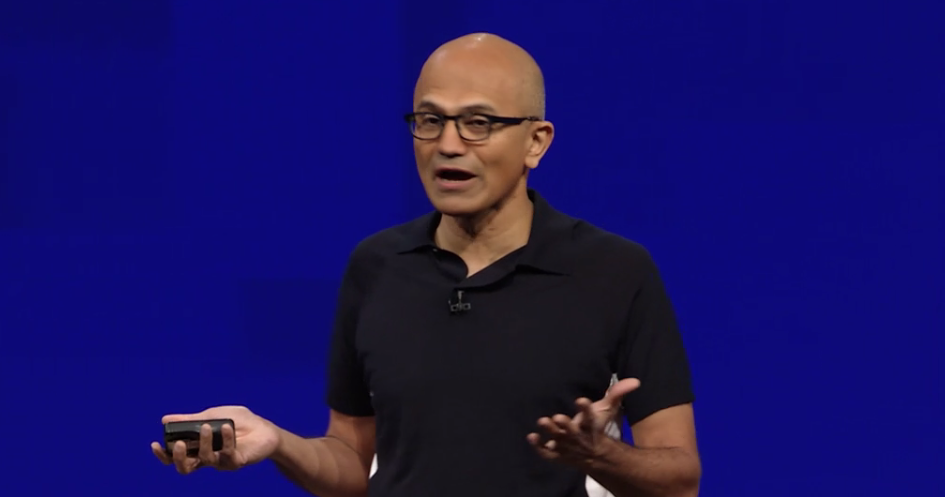Microsoft's Build developer conference kicked off with a keynote featuring CEO Satya Nadella, who set the tone for the event in clear terms: Microsoft views developers not as cogs in the machine, but creators.
“We are a company that started as a developer tools company," Nadella said. "[Today], we want to think about people but also about the institutions people build. It’s not just celebrating any platform or technology but about celebrating what you can do with that technology to have a broad impact. That sense of purpose has been driving us in this cloud-first world."
Nadella moved on to list the opportunities developers have within Microsoft's ecosystem, citing the ability to reach 500 million Windows devices in a secure manner through Windows Store, and the 100 million monthly active users of Office 365. "These are users in the core of the enterprise, using these tools every day," he said of the latter.

The CEO also used his Build keynote to introduce a significant new piece of strategic messaging. “We’re moving from a mobile first cloud first world to a new world that’s made up of an intelligent cloud and an intelligent edge," Nadella said.
This new world has three fundamental characteristics, he added.
“The user experience is getting distributed across devices," Nadella said. "It’s not about an application model for one device. The user experience itself is going to span your devices.” Nadella cited the advent of personal digital assistants such as Microsoft's own Cortana: “As you move between devices, it’s going to be there helping you get your tasks done.”
Data is the currency of this platform shift, driven by IoT (Internet of things). He cited the massive amount of "edge" data being generated by IoT devices on cars, for example. "Data has gravity," Nadella said. "Computational power will move to it." Moreover, "the AI you create will be by definition more distributed," he added. “We’re reaching a point where you can’t rendevous the data for [machine] learning in the cloud.”
The third pillar of the paradigm shift is serverless computation, according to Nadella. "We've got to change how we think about logic," he said. "You want to be able to write logic that reacts to these events, not a piece of logic bound to a single server."
Those comments suegued into an announcement of Azure IoT Edge, a runtime for Windows and Linux that can run on devices even smaller than a Raspberry Pi. The idea is to have computation for analytics and AI run on endpoints, speeding up the process compared to shipping data back to Azure.
Microsoft provided a couple of scenarios—one real-life and one planned—showing the potential of edge computing.
The first was a dashboard developed by Swedish tool maker Sandvik Coromant to monitor equipment at its plants around the world. With the use of IoT Edge, Coromant's implementation allowed it to spot equipment problems and take action much more quickly.
A second demonstration showed how a combination of IoT Edge, commodity cameras, facial and object recognition, rules, alerts and messaging could be used to create a workplace safety system. To wit: A camera sees that a jackhammer is propped precariously and poses a hazard, sparking an alert to a nearby worker telling them to remedy the problem.
But in the end, what resonated more with Build's audience wasn't technical talk and product announcements. Rather, it was a moving video depicting how Haiyan Zhang, research director at Microsoft's Cambridge Research lab, developed a wearable that helped reduce hand tremors in Emma Lawton, a 29-year-old graphic designer suffering from Parkinson's, allowing her to write and draw clearly again.
After the video ended, Zhang and Lawton appeared live onstage to a roar of applause of the sort not often heard at enterprise-oriented technology conferences, if ever.
While Nadella refrained from connecting the dots explicitly, instead heading backstage after a few moments, the womens' appearance drove home the high-level message of his keynote: The ability individual developers have to create things that impart major change. Overall, Nadella's presentation was a welcome attempt at empowering Microsoft developers, rather than merely evangelizing to them.
Subscribe today for unrestricted access to expert analyst views on breaking news.



